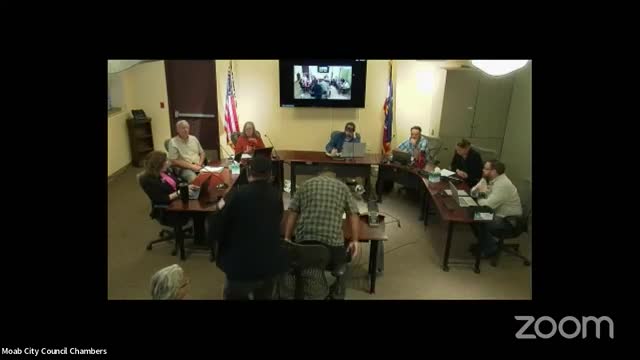City launches urgent campaign to address lead service lines
October 22, 2024 | Moab City Council, Moab, Grand County, Utah
This article was created by AI summarizing key points discussed. AI makes mistakes, so for full details and context, please refer to the video of the full meeting. Please report any errors so we can fix them. Report an error »

In a recent government meeting, officials discussed the completion of an EPA-mandated survey aimed at identifying lead service lines within the water system. The survey categorized service lines into four distinct groups: lead, non-lead, galvanized lines requiring replacement, and unknown. The latter category is particularly concerning, as it includes approximately 1,520 service lines for which the material is not definitively known.
The EPA's initiative requires water providers to locate and ultimately remove lead service lines, which are known to pose significant health risks. The discussion highlighted that while the water department has maintained accurate records for its side of the service lines, there is a lack of data regarding the customer side, which extends from the meter to individual homes or businesses. This gap in information complicates the identification of potential lead sources.
As part of the mandate, officials are tasked with notifying customers about the status of their service lines, particularly those categorized as unknown. A letter is being prepared to inform residents of the potential risks associated with lead contamination and to provide resources for checking their own service lines. The letter will also include guidance on flushing lines and using lead-specific filters to mitigate risks.
The meeting underscored the importance of public awareness and proactive measures, as residents will need to take initiative in assessing their private lines. Officials clarified that while the city is responsible for notifying residents, it is not liable for the condition of the service lines beyond the meter. The city plans to enhance its mapping system to include recorded data on service lines as part of ongoing efforts to ensure water safety.
The EPA's initiative requires water providers to locate and ultimately remove lead service lines, which are known to pose significant health risks. The discussion highlighted that while the water department has maintained accurate records for its side of the service lines, there is a lack of data regarding the customer side, which extends from the meter to individual homes or businesses. This gap in information complicates the identification of potential lead sources.
As part of the mandate, officials are tasked with notifying customers about the status of their service lines, particularly those categorized as unknown. A letter is being prepared to inform residents of the potential risks associated with lead contamination and to provide resources for checking their own service lines. The letter will also include guidance on flushing lines and using lead-specific filters to mitigate risks.
The meeting underscored the importance of public awareness and proactive measures, as residents will need to take initiative in assessing their private lines. Officials clarified that while the city is responsible for notifying residents, it is not liable for the condition of the service lines beyond the meter. The city plans to enhance its mapping system to include recorded data on service lines as part of ongoing efforts to ensure water safety.
View full meeting
This article is based on a recent meeting—watch the full video and explore the complete transcript for deeper insights into the discussion.
View full meeting

